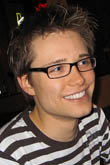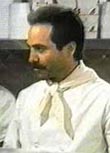|
|
This topic comprises 2 pages: 1 2
|
|
Author
|
Topic: Setting output on Dolby processor
|
|
|
|
|
|
|
|
|
Steve Guttag
We forgot the crackers Gromit!!!

Posts: 12814
From: Annapolis, MD
Registered: Dec 1999
|
 posted 08-12-2008 06:42 AM
posted 08-12-2008 06:42 AM




Actually, A CP200 (w/Cat 517s/Cat 560) remains Dolby's quietest processor, to-date.
The CP55/65 are definitely not quiet...especially on L,C,R and Ls. Neither are the CP500 or CP650. In fact, one reason I went to Panastereo was due to the noise that is seemingly inherent in the Dolby processors. When you do screening rooms where the speakers are rather close to the listener, the noise of the processor becomes quite apparent. The Panastereo CSP1200 was VERY notably quieter. Its output is referenced at .775mV (0dBu). This, no doubt also helps it in general achieve lower noise levels as it also has true active balanced outputs (behave like transformers).
I have to disagree with Louis on this one. To get the best noise floor, you really do want to find the optimal noise out of each unit. Normally, this means driving the output stage to the point just before it clips on the highest peaks...sometimes distortion creeps in just prior to clipping and you want to avoid that too.
For digital stuff, you want to use as much of the digital resolution as possible...again...you want to use that very last bit on the very highest peak. To use any less is to increase one's noise floor and, in the case of digital, loss of resolution in the signal.
One has to watch out when there are gain stages (like VCAs) and processing (like equalizers) as they will alter the effective gain of the system.
Another rule of thumb is...do as much amplification as early as possible and avoid several stages of amplification...this will generally reduce the noise of the system as well as distortion. It is one of the flaws of the red-readers in that we now have a pre-preamp...a better solution would have been to alter the gain of the optical preamp in the cinema processor...but think about all of those modifications on possibly obsolete processors. None the less, you would lower your noise floor by having the cell of the reverse scan reader connect directly to a good preamp with the proper gain. Also, though not as good for long life, increasing the LED intensity to have the same gain as the exciter lamp would improve the noise floor of the system. An arguement there is just what is the noise floor of the optical recording process to begin with....but I digress....
For most Dolby brand processors...they were designed around a 300mV buss level, including their outputs (The Cat 64Bs on the other hand were designed around a 170mV input/150mV output). So yes, going to 300mV (without any EQ applied) should yield you a lower noise floor than just cranking the amps and lowering the outputs of the Dolby processor. I don't doubt that experimenting with each specific processor one could find an even more suitable target level for lowest noise.
Rarely, if ever does raising the amplifier attenuators achieve the best noise floor for a system. I do believe a better term for the attenuators would be "sensitivity" controls. That is what they are and what I think Louis is trying to say. The amplifier has a fixed gain so it doesn't matter where you set them as far as the amplifier's contribution to the noise of the system...they DO affect the noise floor of the thing feeding the amplifiers, however.
Also note, the CP650 has two output modes (now)...Normal and "Noise Floor optimization." The difference is where they place the nominial level in the digital domain. In effect, they raise the input from the A/D converters and subsequently lower the output of the D/A converters identically (overall level does not change regardless of setting). However, by increasing the level in the digital domain, you are MUCH closer to clipping the digital processing. As such, if you over-EQ and play the volume anything above "7.0"...you will likely clip the system. The "normal" setting allows you to be stupid and not get into too much trouble.
Steve
| IP: Logged
|
|
|
|
|
|
|
|
|
|
|
|
|
|
|
|
|
|
|
|
|
|
|
|
All times are Central (GMT -6:00)
|
This topic comprises 2 pages: 1 2
|
Powered by Infopop Corporation
UBB.classicTM
6.3.1.2
The Film-Tech Forums are designed for various members related to the cinema industry to express their opinions, viewpoints and testimonials on various products, services and events based upon speculation, personal knowledge and factual information through use, therefore all views represented here allow no liability upon the publishers of this web site and the owners of said views assume no liability for any ill will resulting from these postings. The posts made here are for educational as well as entertainment purposes and as such anyone viewing this portion of the website must accept these views as statements of the author of that opinion
and agrees to release the authors from any and all liability.
|

 Home
Home
 Products
Products
 Store
Store
 Forum
Forum
 Warehouse
Warehouse
 Contact Us
Contact Us




 Printer-friendly view of this topic
Printer-friendly view of this topic














